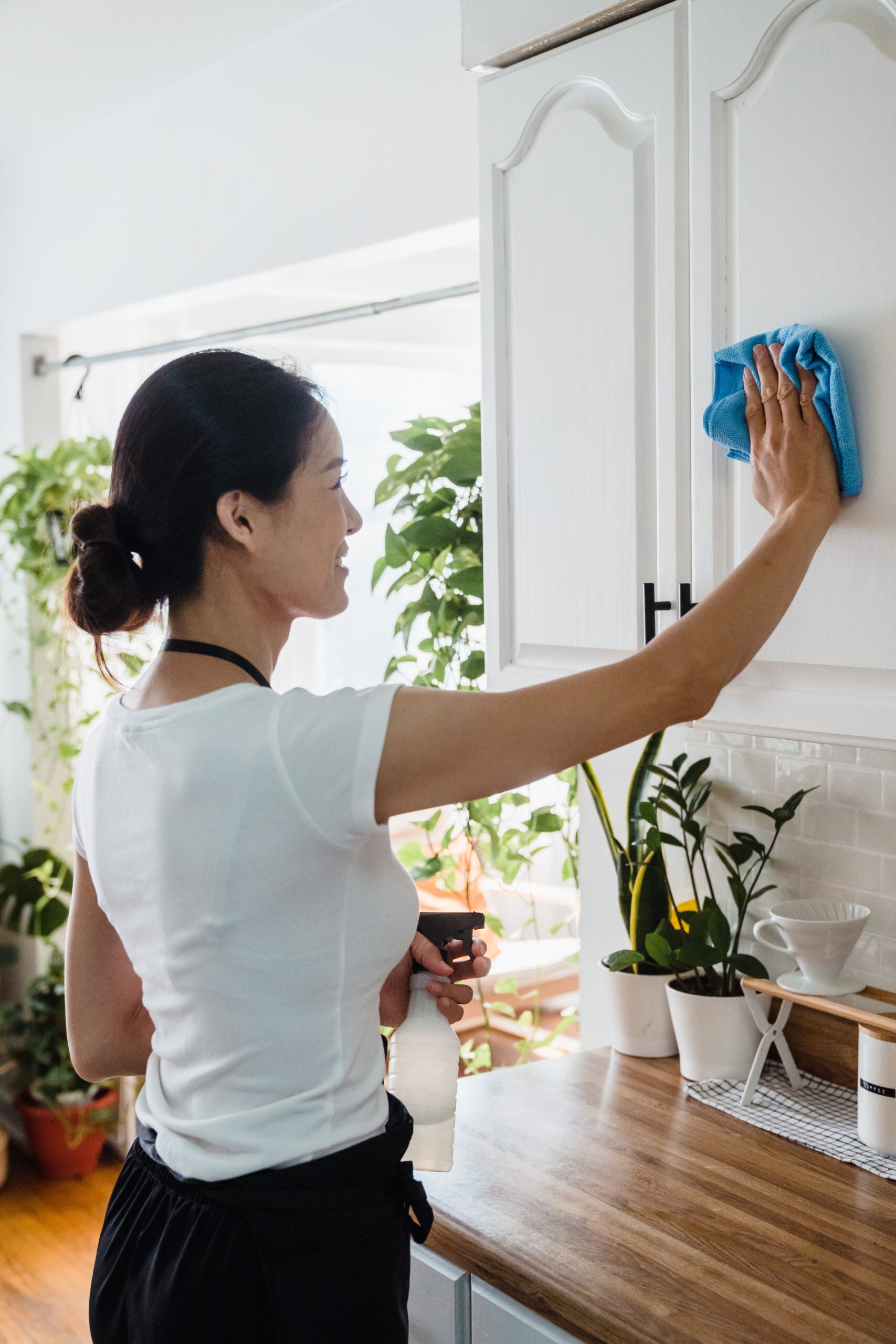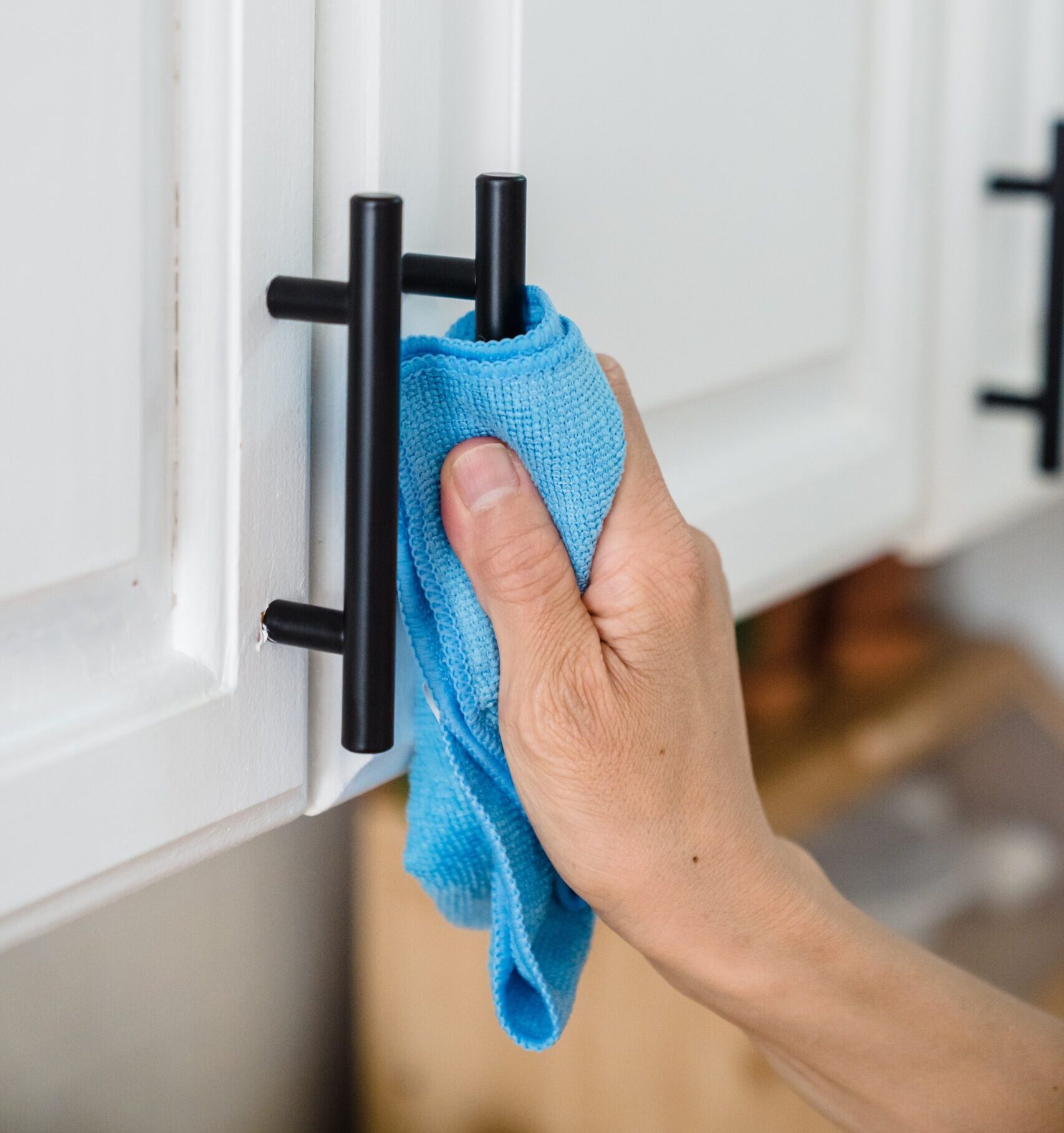Kitchen cabinets are an important part of any home. Over time, the paint on these cabinets start to wear down, and instead of buying a new cabinet, people may decide on stripping of the old paint using sandpaper so they can repaint it and save money. Unfortunately, this method often causes more scratch marks and damage on finished surfaces which can be difficult or even impossible to remove once they’re there. Luckily, there is another alternative that you can use to successfully strip off the paint without further damaging your cabinets – through the use of a deglosser.
A deglosser is a strong solvent-based chemical product designed to remove gloss or topcoats such as paint, varnish, lacquer, shellac or polyurethane from wood and other surfaces in order to make the surface ready for refinishing. It is often used prior to painting or staining cabinets, furniture, and many more. By using a deglosser, you are sparing your cabinets from excessive rubbing and potential scratches caused by manual sanding.
The Advantages of Using Deglossers on Kitchen Cabinets
If you need more convincing on why you should use deglossers on your kitchen cabinets, here is a detailed list of its advantages:
1. Quick & Easy Use – Deglossers are relatively easy to use and require minimal effort for maximum results. Unlike sandpaper that needs to be used carefully and often back and forth over an area, deglossers just require one coat on the surface and they act chemically as a form of paint stripper. This allows them to cut through the layers of paint without having to put too much physical effort into it or rub out any details.
2. Cost Effective – Applying a deglosser is significantly cheaper than investing in new cabinets or repainting them. It provides an economical way to upgrade the look of kitchen cabinets without breaking the bank. Sandpaper gets used quickly so you need to purchase it regularly, whereas with deglossers, one container will last multiple sessions of stripping paint away before you need more.
3. Clean Finish – Deglossers also help provide a clean slate or a nice smooth finish and ensures there will be no lumps or bumps remaining on your cabinets before painting starts again. This is a much better alternative than sandpaper that tends to leave behind rough edges that have particles from the sanding process embedded in them which could make it difficult for new coats of paint to stick properly and give a good finish overall.
How should you use deglossers on your kitchen cabinets?
So you already bought a deglosser, what now? No need to worry, here is a detailed guide on how you should apply it. Make sure to read carefully, and follow the guide for a smooth process:
1. Begin by cleaning the cabinets using a mixture of warm water and mild detergent. Use a cloth or sponge to scrub off any dirt, dust, or grime from the surfaces of the cabinets.
2. Next, use a deglosser product specifically designed for kitchen cabinets to remove the existing finish from the surface. You can purchase a deglosser solution in aerosol or liquid form at your local hardware store. Follow the instructions on the product’s label for best results.
3. Test the deglosser product on a small area of cabinetry first to confirm it won’t damage the surface before proceeding with its application over larger areas.
4. If you’re using an aerosol deglosser spray it directly onto a clean rag and then apply it to your cabinets in a sweeping motion, making sure you cover all areas evenly with the solution. If you’re using a liquid deglosser simply pour it onto another clean cloth and then wipe it onto the cabinet surfaces in circular motions until they are completely coated with the deglossing solution.
5. Allow your cabinets to sit for several minutes so that they have time to fully absorb and react with the deglossing solution before wiping them down with a dry microfiber cloth and allowing them to air dry completely without further scrubbing or rinsing needed.
6. Finally, inspect your cabinets for evenness before deciding whether to sand them smooth if there are raised edges caused by high-gloss finishes that weren’t completely removed by the process of deglossing them or leave them as is if you are happy with how they look after this step alone.
In conclusion, using deglossers before repainting your kitchen cabinets may be far more beneficial in both cost and time over sandpaper and sander combination. With its improved effectiveness over traditional methods, there’s no reason not to give it a try!


